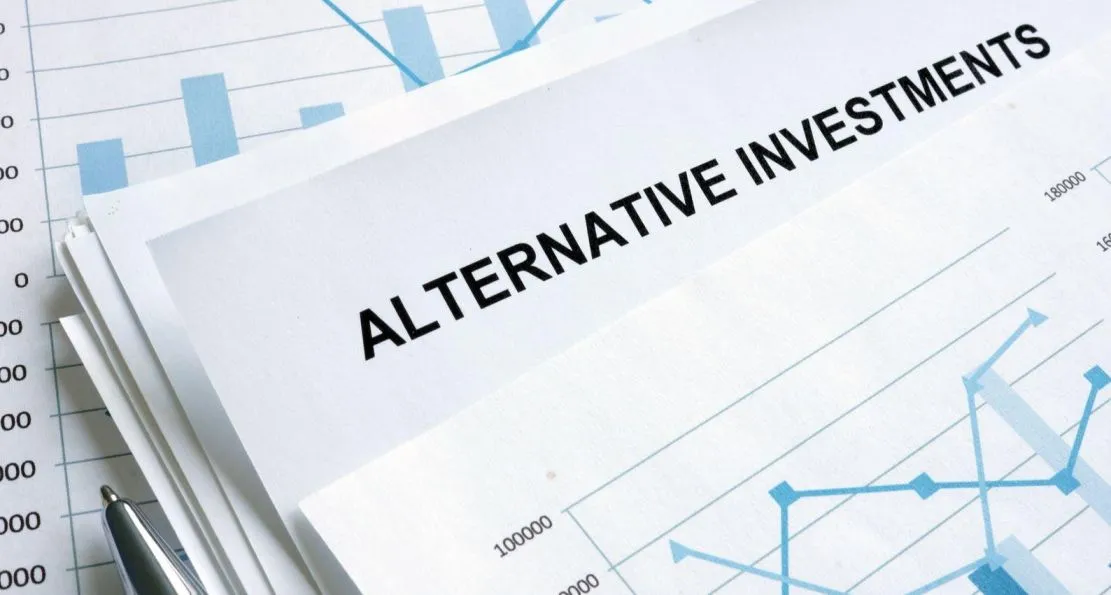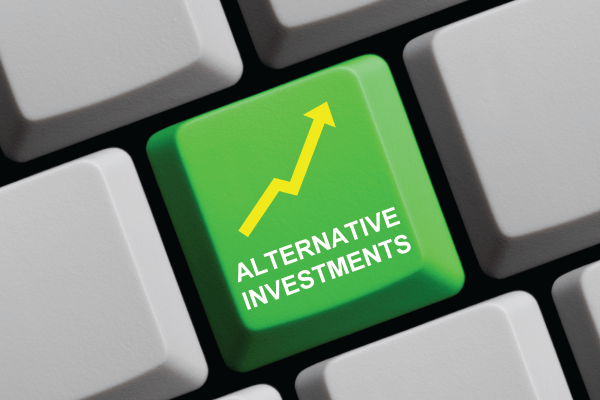
How One Should Purchase Alternative Investments
Alternative investing may be for you if you are looking for less correlation with conventional equities and bonds, perhaps high returns, and more diversification. Among these kinds of assets include real estate, commodities, cryptocurrencies, artwork, wine, and more. Originally the domain of affluent, qualified investors, today anybody may access alternative investing possibilities using funds and crowdsourcing sites. Remember that, in many circumstances you will have to tolerate low liquidity in exchange for the promise of more diversity and strong profits. Read on for a different investment how-to manual.
Define Alternative Investing
Since the 2008 recession, stock market drop, and mortgage market crisis, interest and possibilities for alternative investment have surged. Investors seeking assets with a negative correlation to conventional equities and bonds were ravenous when conventional markets collapsed. Usually, alternative investments become more and more popular during times of economic downturn and increased volatility of the equity markets.
Alternative investment vehicles are those outside of the usual range of stocks and bonds. Previously solely accessible to the ultra-wealthy, currently possibilities also exist for lesser investors.
Among the several alternative investing tools are:
-
Golden and silver
-
Wine Art
-
Real property
-
Hedges
-
Private capital
-
bitcoin
-
private and troubled debt
As well-known celebrities like Matt Damon and Reese Witherspoon highlight, millennials and younger investors have embraced alternatives. Crowdfunding sites like Fundrise and Crowdstreet allow you quick access to alternative investments. Alternative investing prospects also come from private funds, publicly listed real estate investment trusts or REITs, and managed ETFs.
Comparatively To Stocks, Alternative Investments

The return possibilities of buying individual equities or stock market ETFs and mutual funds are well known to most investors. The U.S. stock market paid a 9+% average yearly return during the past hundred years or so. But the return also featured sporadic years of double digit drops, such the -18.01% dip in 2022 and the -36.55% crash in 2008.1: For long term investors, investing in the stock market is a fundamental asset class in addition to the possible for great performance, simple access, and liquidity.
Investors keep looking for assets less connected with the stock market as well as substitutes for equities. This drives even more desire for alternative investments. Normal returns may vary depending on the alternative investment vehicle from a low of 5.0% for a debt fund to a double digit return for some real estate partnerships and other specialty alternative investment vehicles.
Purchasing Alternative Investments: How to Do It
The platform and kind of assets will affect the way one buys alternative investments. Buying an alternative ETF or mutual fund will require opening an investing brokerage account. Should you be purchasing alternatives from a stand-alone company such as Cadre, Peer Street, Realty Mogul, or Arrived, you will follow the "set up an account" instructions.
Sample Purchase Alternative Investing Strategy
-
Create an account by registering for a respectable alternative investment site as Fundrise, Yieldstreet, or Crowdstreet. You will be obliged to confirm your identification at this stage using a government-issued ID.
-
For financial transfers, link a bank account and verify payment information: Linking a payment method to your account comes second. This lets you contribute money to buy other assets. Different exchanges might take different payment methods; so, it is crucial to find out which payment method the exchange in your country takes.
-
Choose investments and distribute money. Out of the several investing options, select the asset or assets you wish to make investments in. List the shares' count and kind of investment you make. There will then be a request to move the money from your previously linked bank account. Should the investment not use all of your sent funds, the surplus will stay in your account as a cash balance for next investment prospects.
-
While some alternative investment products are open for everybody, others are for especially qualified or certified individuals. Should the platform be reserved for authorized investors only, you will have to show evidence of your meeting of the accreditation criteria.Twice
Requirements For Accreditation:
-
net worth more than $1 million, excluding individual or couple principal residence
-
Income exceeding $200,000 for individuals or $300,000 jointly in each of the past two years, and fairly expects the same for the current year.
-
informed professional in investing
-
There are several ways to invest in wine or art depending on your interests. Investing in art, wine, and certain high-end collectibles is easiest with a crowdsourcing tool such as Yieldstreet or Masterworks. Otherwise, you can purchase and sell at auctions or through specialized dealers. You may also read this: Analysis of Netflix Stock: Record Revenue and Growing
Starting An Alternative Investing Account Requires What?
If you are investing on a "accredited investors only" site, you will need knowledge to confirm your personal details and financial situation.

Personal Details
Every platform calls for investors to register an account and supply basic personal details including:
-
Full name; Email address; Phone number
-
Household address
-
Certificate of address
-
Social Security numerical value
-
ID issued by governments
-
Information about banks
-
To prove eligibility, accredited investors might have to send extra bank or tax statements.
Minimum Funds
Minimum deposits go from $10 to $20,000 or more. Certain sites have a clear minimum for every given project. For instance, FarmTogether, open to accredited investors only, provides a Sustainable Farmland Fund requiring a minimum of $100,000 and crowdsourcing options starting at $15,000.Third.
If you are investing in a mutual fund or alternative ETF, you usually will discover affordable minimums. For as low as a few bucks, Fidelity and other investing companies sell fractional shares of a REIT or commodities ETF.
How Can ETFs Help One Get Exposure to Alternatives?
Available to all investors, including accredited and non-accredited, ETFs—also known as exchangetraded funds Other ETFs range in kind from merger, arbitrage, risk parity, crypto, metals, real estate, multi-asset, and commodities. ETFs are sold at conventional investing brokers including Fidelity, Schwab, Vanguard, and E*TRADE. ETFs are also available on several of the investment applications including M1 Finance, Robinhood, Webull, and Public.
Some substitute ETFs are:
-
Managed Futures ETF (RSBT) and return stacked bonds
-
TPMN, Timothy Plan Market Neutral ETF
-
NOPE, or Noble Absolute Return ETF
-
ETF of RPAR Risk Parity (RPAR)
-
Merger ETF for Pro Shares (MRGR)
-
Bitcoin Strategy ETf, BITO
-
S&P GSCI Commodity-Indexed Trust (iShares)
Why Should One Use Alternative Investments?

One key attraction of alternative investment is the prospect of reduced correlations with stocks and bonds. For years, pension money and institutional investors have had options at their disposal. Still, it might be careless to combine all the choices into one category. Remember that although in the general sense there are many different investing options. Like commodities, certain substitutes may guard your capital as prices rise and offer a hedge against price inflation. When conventional investment values fall, negative linked with stocks and bonds investments might strengthen your financial holdings. Some alternative investments, such as private real estate deals and hedge funds, provide the chance for better returns and reduced relationships with conventional assets.
Alternatives provide a path with a prospect of better total returns and less volatility if you are looking for diversification outside conventional equities and bonds. Although some would contend that the finest bargains are only available to high-net-worth accredited investors, today all investors have options.
What Are the Drawbacks of Alternative Investments?
Though not a certainty, the prospect of better returns and less investment portfolio volatility is something else. Their danger is increased by some private alternative investment vehicles not under SEC control. Greater risk of loss comes with the promise of greater profits. Some creators of alternative investments lack the knowledge and training found in most highly regulated mutual and exchange traded funds. You may run across unusual tax reporting with alternative investment, which might complicate your tax preparation.
Many alternative investments are illiquid and include extensive lock-up times. You could thus not recover your original outlay for several months or years. Only authorized investors may access some of the finest bargains. Additionally high are alternative investing fees. While some private alternative offers impose large cost ratios and extra performance-based fees, ETFs and mutual funds usually charge less than a 1% expense ratio. Income is another drawback of alternative investing. Unlike bonds and many equities, commodities, precious metals, artwork, wine and other alts lack any cash flow.
What You Need to Know About Secondary Markets
Many alternative investments offer secondary markets to offset lack of liquidity. Secondary markets provide means for purchasing or re-selling an item acquired or sold during the first offer. On the other hand, a main market is the place you might purchase a fresh offer on. You might be purchasing a share of real estate from the original owner on a stock initial public offering (IPO) or a crowdsourcing real estate website.
Most equities and bonds are liquid, easily purchased and traded on secondary markets—public exchanges. Several alternative investing platforms provide their own marketplaces or secondary markets where vendors may find interested purchasers for less liquid investments. Understanding the liquidity of the product helps one make wise investments in any kind of alternative asset.


